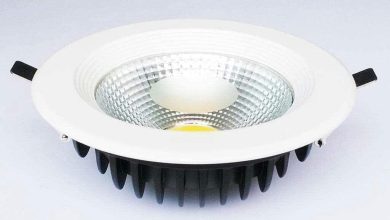How Multi-Parameter Probes Are Enhancing Water Quality Management in Various Industries

Water is one of the most crucial resources on the planet, and its quality directly impacts both environmental sustainability and industrial operations. From ensuring the health of aquatic ecosystems to optimizing processes in manufacturing plants, the ability to monitor and manage water quality is vital in various industries. One of the most effective ways to achieve this is through the use of Multi-parameter probe.
These advanced instruments are designed to measure several different water quality parameters simultaneously, providing comprehensive insights into the health of water bodies and the efficiency of industrial processes. Multi-parameter probes are now indispensable tools in environmental monitoring, water treatment, aquaculture, and many other fields. In this article, we will explore how multi-parameter probes are enhancing water quality management across different industries, leading to better decision-making, increased efficiency, and improved sustainability.
What Are Multi-Parameter Probes?
A multi-parameter probe is a single device equipped with multiple sensors designed to measure various physical, chemical, and biological properties of water. Common parameters measured by these probes include:
-
pH (acidity or alkalinity of the water)
-
Dissolved Oxygen (DO) (oxygen available for aquatic organisms)
-
Temperature (affects chemical reactions and biological activity)
-
Turbidity (cloudiness caused by suspended particles)
-
Electrical Conductivity (EC) (indicates the level of dissolved salts)
-
Salinity (important for marine and aquaculture environments)
-
Nutrient concentrations (nitrates, phosphates, etc.)
The benefit of multi-parameter probes is that they allow for real-time monitoring of several water quality parameters with a single tool, reducing the need for multiple instruments and making the entire process more efficient.
The Importance of Water Quality Management
Proper water quality management is essential for a variety of reasons:
-
Environmental Sustainability: Poor water quality can lead to the degradation of ecosystems, harming aquatic life and disrupting the balance of the environment. Contaminants like heavy metals, pesticides, and excess nutrients can lead to eutrophication, which depletes oxygen levels and harms aquatic species.
-
Health and Safety: Contaminated water can pose serious health risks to humans and animals. Monitoring water quality ensures that water sources are safe for drinking, recreation, and agriculture.
-
Regulatory Compliance: Industries must comply with local and international water quality regulations to avoid fines and ensure their operations do not negatively impact the environment.
-
Operational Efficiency: In industries like manufacturing, power generation, and agriculture, water quality directly impacts the efficiency of operations. Poor-quality water can lead to equipment damage, decreased productivity, and increased operational costs.
Multi-parameter probe play a crucial role in water quality management by providing accurate, real-time data that helps industries and environmental agencies make informed decisions.
Applications of Multi-Parameter Probes in Different Industries
1. Environmental Monitoring
Multi-parameter probes are widely used in environmental monitoring to assess the health of natural water bodies like rivers, lakes, and oceans. Environmental agencies, researchers, and conservationists rely on these probes to track key water quality parameters, including pH, dissolved oxygen, turbidity, and temperature.
For example, the presence of high turbidity could indicate pollution or runoff from construction sites, while low dissolved oxygen could signal a lack of oxygen in the water due to organic waste or excess nutrients. By monitoring these parameters continuously, agencies can quickly identify pollution events and take action before significant damage is done to the ecosystem.
Moreover, multi-parameter probes help monitor water quality over time, providing valuable data for long-term environmental studies and informing policies related to water conservation and pollution control.
2. Water Treatment and Wastewater Management
Water treatment plants rely heavily on multi-parameter probes to ensure that the water they treat meets regulatory standards for safe consumption or discharge. For example, turbidity levels are monitored to assess the effectiveness of filtration processes, while dissolved oxygen is tracked to ensure that the water is safe for aquatic life once it’s released.
In wastewater management, multi-parameter probes help ensure that the water being discharged into rivers or oceans is free from harmful contaminants. Parameters like pH, salinity, and chemical oxygen demand (COD) are continuously monitored to ensure that the water meets the required environmental standards.
By integrating multi-parameter probes into their operations, water treatment plants can optimize their processes, reduce chemical usage, and improve efficiency, ultimately contributing to more sustainable water management practices.
3. Aquaculture
In the aquaculture industry, maintaining optimal water quality is crucial for the health and growth of farmed fish and other aquatic organisms. Multi-parameter probes are used to monitor parameters such as dissolved oxygen, salinity, and temperature—all of which are critical to maintaining the right conditions for aquatic life.
For example, fish require a certain level of dissolved oxygen in the water to thrive, and temperature plays a significant role in the metabolic rates of fish. If the temperature rises too high, fish may become stressed, leading to reduced growth rates and increased susceptibility to disease.
By using multi-parameter probes, aquaculture operations can ensure that the water remains within the optimal range for the species being farmed, leading to healthier stock, higher yields, and more efficient operations.
4. Industrial Water Use
Industries such as power generation, mining, pharmaceuticals, and food processing require large quantities of water for cooling, cleaning, and manufacturing processes. However, the quality of water used in these industries directly impacts both the efficiency of operations and the longevity of equipment.
For example, in power plants, water is used for cooling machinery and turbines. If the water’s conductivity is too high, it can lead to scale formation on equipment, reducing its efficiency and lifespan. pH levels are also monitored to prevent corrosion in pipes and machinery. By using multi-parameter probes, industries can continuously monitor water quality and adjust treatment processes accordingly, preventing damage to equipment and ensuring that operations run smoothly.
Moreover, industrial facilities must ensure that the wastewater they discharge into public water systems meets environmental regulations. Multi-parameter probes provide real-time data on parameters like chemical oxygen demand (COD) and turbidity, helping industries comply with regulatory standards and minimize their environmental impact.
5. Agriculture and Irrigation
In agriculture, water is used for irrigation, livestock, and processing. Ensuring that the water is of high quality is essential for crop health, livestock well-being, and food safety. Nutrient levels such as nitrates and phosphates are particularly important to monitor, as excessive nutrients can lead to water contamination and eutrophication in nearby water bodies.
Multi-parameter probes help farmers and agriculturalists monitor the quality of water used for irrigation, ensuring that it’s free from harmful contaminants and has the right balance of minerals. This leads to healthier crops, more efficient irrigation systems, and reduced risk of contamination.
Advantages of Multi-Parameter Probes in Water Quality Management
1. Cost-Efficiency
Multi-parameter probes combine multiple sensors into one device, reducing the need for multiple instruments and the costs associated with their maintenance, calibration, and operation. By streamlining the monitoring process, these probes offer a cost-effective solution for water quality management across various industries.
2. Real-Time Data
Multi-parameter probes provide real-time monitoring, allowing for immediate response to changes in water quality. This is especially important in industries where water quality directly impacts operations, such as in manufacturing or aquaculture.
3. Accuracy and Reliability
By continuously measuring multiple parameters with a single device, multi-parameter probes provide highly accurate and reliable data. This leads to better decision-making and more efficient water quality management.
4. Environmental Sustainability
By enabling industries to optimize water usage and treatment processes, multi-parameter probes contribute to more sustainable water management practices. Real-time monitoring helps reduce water waste, improve wastewater treatment efficiency, and ensure that discharges meet regulatory standards, ultimately protecting aquatic ecosystems.
5. Ease of Use
Modern multi-parameter probes are designed for ease of use, with user-friendly interfaces and wireless connectivity options. This allows for easy deployment in the field and remote monitoring of water quality, reducing the need for on-site visits and manual data logging.
Conclusion
Multi-parameter probes have become invaluable tools in the management of water quality across a wide range of industries. By offering real-time, accurate data on multiple water quality parameters, these probes enable industries to optimize their operations, ensure regulatory compliance, and protect the environment. Whether it’s in environmental monitoring, wastewater treatment, aquaculture, industrial water use, or agriculture, multi-parameter probes enhance water quality management, leading to increased efficiency, sustainability, and reduced environmental impact. As technology continues to improve, these probes will only become more advanced, helping industries and environmental agencies meet the challenges of an increasingly water-stressed world.




